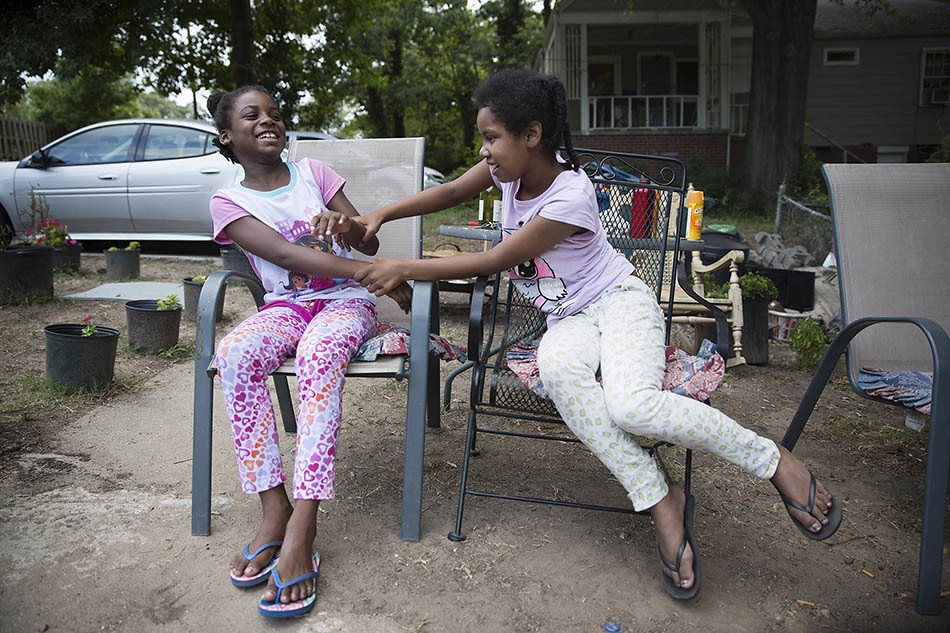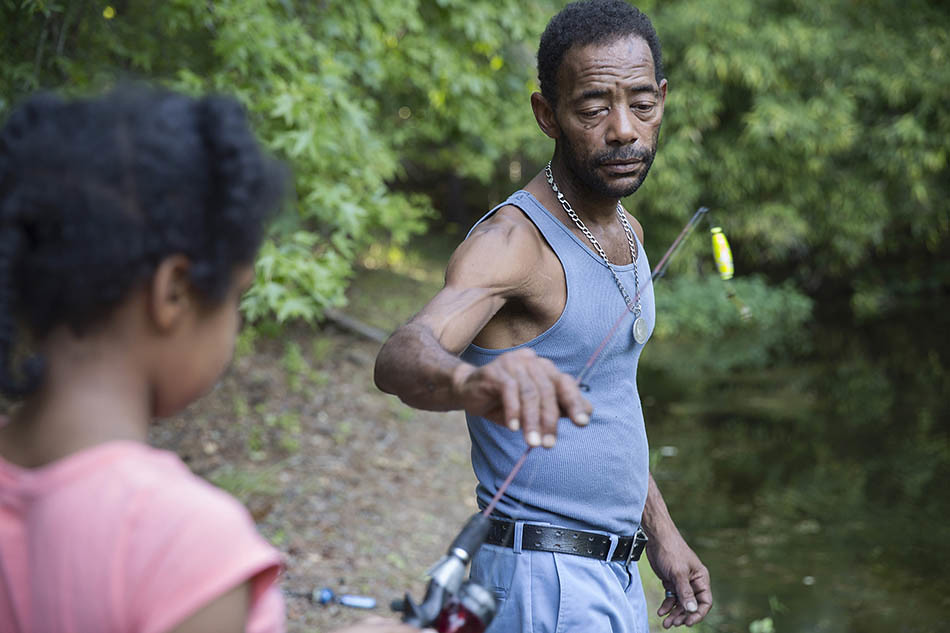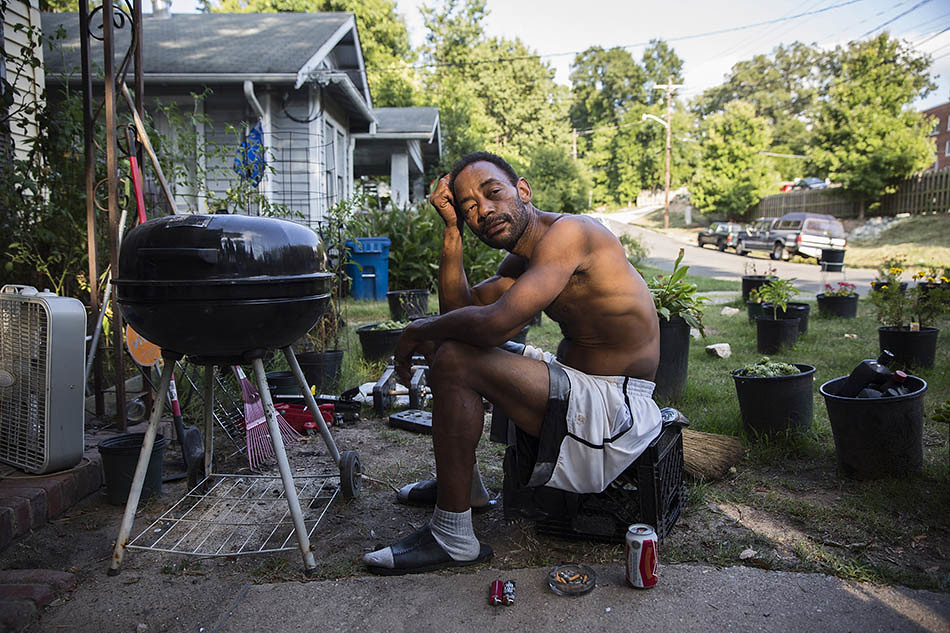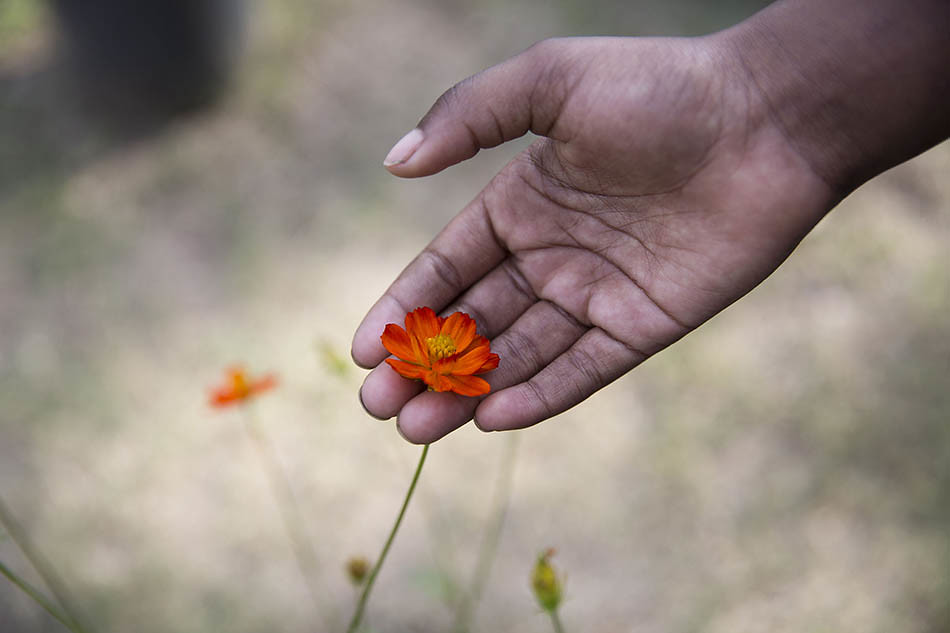Spotlight on Sophia Nahli Allison
Jun 29, 2016

TID:
I love this image - it’s got a lot going on, and it also asks a lot of questions. Can you tell me a little about the image?
SOPHIA:
It was the first time I realized the family was letting me in. We had just gotten back from fishing, and I remember standing outside of their house for a bit debating if I should go in or not, because I had not been in their home before. This was probably our third day together. I decided to walk in and everyone treated me like I belonged there, I moved into the kitchen where I saw Shorty Portee having this quiet moment with himself. It was beautiful to me, but I felt like I was being invasive.
The photos even show my hesitation. I stood back at first behind Shorty, confused if I should be in there, but I realized he didn't care. By that time the moment was almost over so I quickly set up my frame. This scene felt so personal to me. Shorty is a deep thinker but his life (and his nieces) have taken a 180 since they moved in with him. He was learning how to have young girls around so it was a stressful balancing act for everyone. For me this was such a lovely moment of peace and quiet, also contemplative.
TID:
How did you first connect with the family?

SOPHIA:
They live a couple of blocks from me. I just moved to Durham for grad school about a week earlier, and I drove by their house one night and noticed all these flower pots on Shorty’s front lawn, there are about 30. It was such an interesting sight. About two days later I drove by during the day and yelled out of my window asking about the flower pots. Shorty told me to come up to the porch and he’ll tell me about them. He was there with Key, his niece, her two daughters and several other people. I maybe stayed about 30mins-1hr just talking to everyone. I thought about them that night and went back the next day asking if I could do a photo story on them for my class.
TID:
I always love images that stem from a more intimate space. How do you work to gain such access?
SOPHIA:
When I had time I would stop by their house after class or on the weekend, it could be for an hour or the entire afternoon. Sometimes without my camera, sometimes without it, and other times with it but never using it. I don’t like forcing people to let me in. You have to be genuine and it has to come naturally.
Sometimes I would just let Key’s daughters play with my camera, other times I’d just go to talk. I really cared about their story. I didn’t want to exploit it so I believe in learning about folks on a deeper level, only then can the camera truly capture it.

Maintaining access is interesting. I actually just had a hurtful incident where Shorty’s niece told me I was never a true friend. I was very shocked this would happen. Since meeting the family in August I would go back whenever I had time just to say hi and see how everyone was doing. I try to stay connected, because I never want people to think I’m using them, but realistically I’ve started to wonder what does that look like to remain close with people you’ve documented.
How can I be genuine and upfront about what I want, yet making sure people understand sometimes it’s not possible for me to become friends with everyone I meet. I say this from a place of hurt, I literally cried when I read the email because I thought I’d been honest and tried to show that I cared as much as possible. This happened just two weeks ago. Maybe this has happened to other visual storytellers?
I believe in being a kind and warm person, talent and access mean nothing if your intentions don’t come from a place of love and respect. So I truly hope people I work with know I’m doing it because I care.
TID:
I’m always interested in how photographers problem solve. What problems did you encounter, and how did you overcome/work through them?
SOPHIA:
I started to realize a lot of the story took place on the front porch which made me nervous. I thought, ‘how can I tell a story that takes places in one dominant space yet still provides a variety of possibilities’. I had to realize the limitations provided opportunities for patience, relationship building, and creativity. How does lighting change throughout the days, where are moments and connections, how do they relate and connect to their space. The subtleties are important.

TID:
What surprised you about this project?
SOPHIA:
The way it ended honestly, losing the trust of Key.
TID:
What did you learn about yourself during this process?

SOPHIA:
I’m a very sensitive being, not sensitive as in hurt easily, but susceptible to other’s situations. I don’t like seeing people struggle, I feel privileged with my camera sometimes, I want the process to be healing for people and not just something that benefits me. It’s important to understand what a beautiful thing it is that someone trusts you enough to let you in their lives, cherish it.
TID:
What have you learned about others?
SOPHIA:
We all have dreams, goals, struggles, pain, beauty and strength. We all have wisdom. We are all human. My brother once said we are both Jedi and Sith...I believe that. But more importantly, we want love, to be appreciated, and to be heard.

TID:
Now, onto the main image. Can you walk us through the moments leading up to it? Additionally, can you talk about what you were thinking processing while making the image?
SOPHIA:
If I didn't trust my instinct and go in their home this image wouldn't exist. I was extremely hesitant about following the family inside, so when I finally went in and embraced their acceptance of my presence this moment presented itself. Again I kept my distance because I didn’t want Shorty to stop what he was doing, I didn't want to disturb this moment. I made some frames from behind, when I realized he didn’t even flinch I quickly evaluated my image and decided how I could best capture the moment. I loved the moodiness of the natural and fluorescent light so I kept my settings the same and changed my positioning to make 7 final frames before it was over.
TID:
In conclusion, what advice would you have for someone wanting to do this type of work?
SOPHIA:
Be patient, both in the field and in your personal journey. We are not saviors, and we are not giving anyone a voice but we are creating a platform for voices to be heard. You’re an advocate for good in the world, you are working for and with the people. That being said...also take care of you. Love and be kind to yourself, be inspired by others but find your own style. Enjoy the journey and don’t rush it, laugh, cry, and stay curious. Don’t compare, there is room for all of us.
:::BIO:::

I am a video storyteller at the community level and a teaching artist. I am passionate about stories that examine culture and humanize the voices of youth, people of color, and the LGBTQ community. An LA native currently in the graduate program at UNC and the summer intern at The Seattle Times. I was a participant of the the Eddie Adams Workshop XXVIII, The New York Times Student Journalism Institute and the 2014 New York Times Lens Blog Portfolio Review. I've interned at The Tampa Bay Times and The Chicago Reporter. I've taught photo and video to youth in Chicago and Los Angeles and I am a grateful recipient of the Chicago 3Arts Award for teaching artist. I believe storytelling is a tool for social change.
You can see more of her work here:
IG: @yagurlsophia